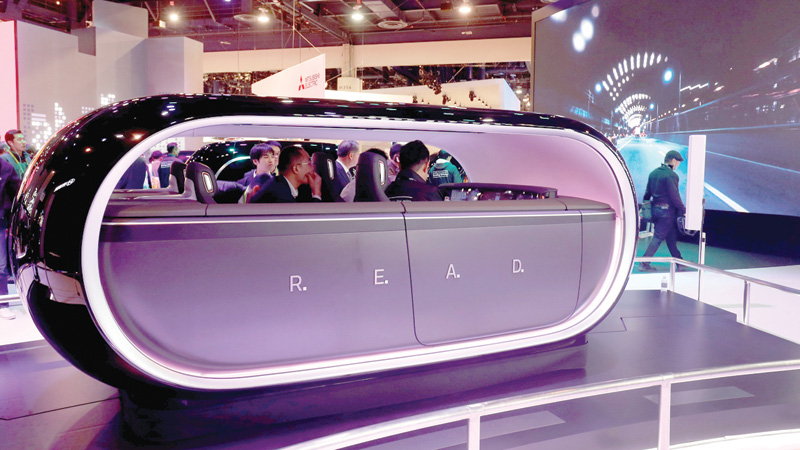

Since the earliest days of car production, the focus has been mostly concerned with a successful driving experience for the driver.
But at the 2019 CES technology fair in Las Vegas (running from January 8-11), it seems that that focus has shifted to the passenger.
With the growth of the electric car and the coming dawn of autonomous driving, some of the biggest names in the industry took to CES to show how their focus has moved from engine size to onboard entertainment systems.
It is all about colourful and intelligent control systems, large screens and ways in which the driving experience can be as pleasant and informative as possible for passengers.
The Chinese newcomer Byton is a standout with its alluring M-Byte, featuring a huge, dashboard-wide display in the series version.
Mercedes’ new CLA is also less about design or engine size and more about its MBUX operating system, which now also reacts to gestures and features from passengers and boasts an improved voice control with natural dialogue.
It’s a trend that prevails throughout the fair. Kia’s concept can recognise the mood of the occupants and can, for example, automatically adjust the climate and interior of the vehicle to it.
Audi is offering back-seat computer games where the virtual reality content matches the real-time movements of the vehicle. Meanwhile anyone who sits down in the BMW iNext feels more like they are in a living room than a car with its hidden electronics.
Its the clearest signal so far that the industry is in no doubt that autopilot will, perhaps sooner than expected, be taking the wheel from drivers in the future.
In another glimpse of what is to come, car or ride sharing in public robotic shuttles, has also been teased.
These new vehicles, battery powered of course, will cruise autonomously through cities, be ordered by app, and automatically plan their routes in such a way that as many people get to their destinations as possible.
And because there are not always only passengers to drive, concepts such as Mercedes’ Urbanetic and Rinspeed’s small Microsnap offer interchangeable bodies that can also operate for package delivery.
These are automatically changed at special stations, thus making it possible to use the vehicle even more efficiently while also reducing the number of cars on the road.
So that we don’t get too dazzled with images of the utopian future, Harley-Davidson took the time to embrace the modern age with their first e-bike LifeWire, which can drive in the here and now, and goes on sale this summer.
But, in contrast to the autonomous prototype bike from BMW, which drives its laps without a driver in front of the exhibition halls, the electric Easy Riders on the LifeWire will still drive themselves. For how long seems to be the main question. — dpa
Oman Observer is now on the WhatsApp channel. Click here



